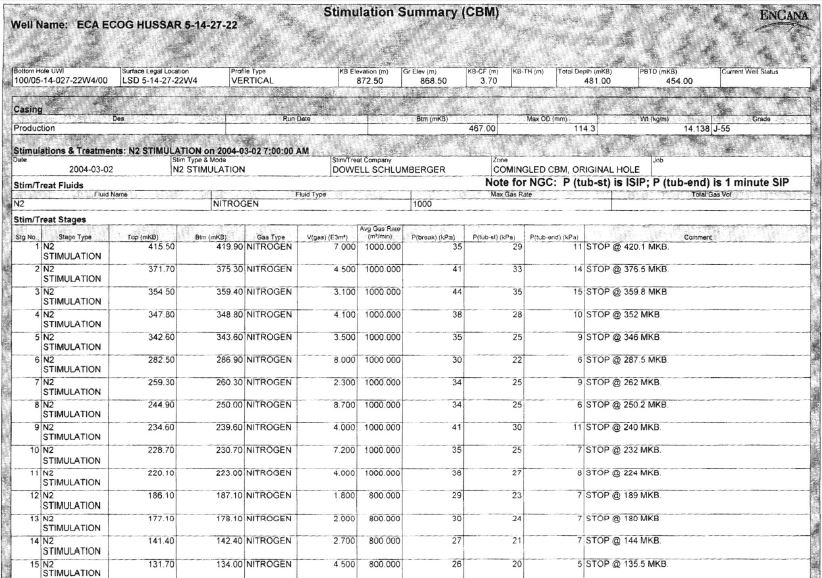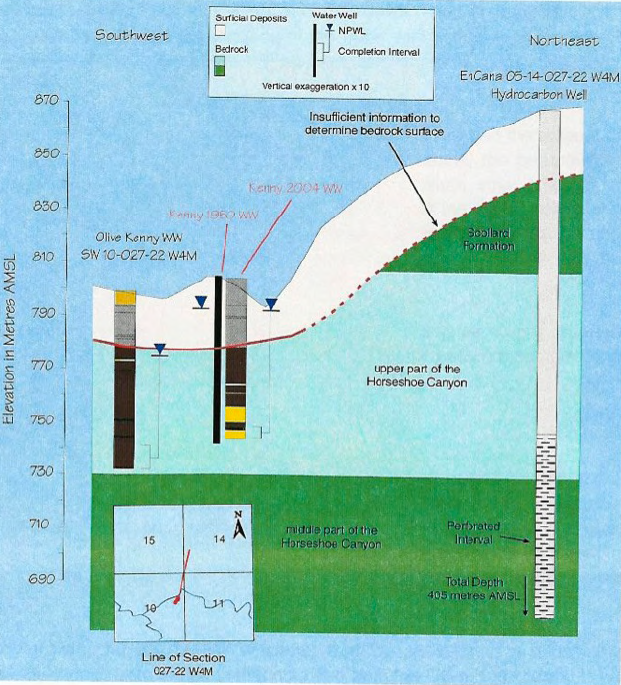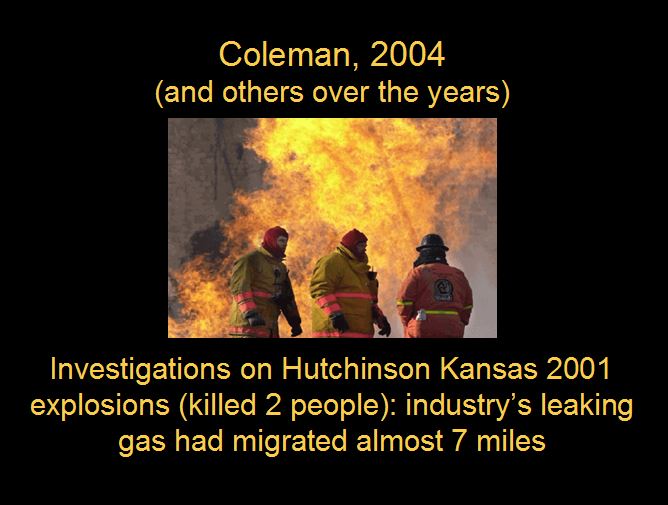Unused Gas Well Spews What’s Suspected to Be Frack Waste, Killing Fish by Julie Grant, February 4, 2021
Ohio regulators are working at a gas well that started spewing what’s believed to be brine water from fracking into the environment more than a week ago.
The Ohio Department of Natural Resources, which regulates the oil and gas industry, said in an email that it was notified on Sunday, January 24 that fluid, what the agency called “produced brine,” was spraying out of an oil and gas well in the Crooked Tree area near Dexter City in Noble County.
Brine is a salty byproduct of gas and oil production and can contain toxic metals and radioactive substances, according to US EPA.

This is what injection wells do to oil and gas wells that have been dead for 6yrs. That’s 2.2 barrels of Brine water a minute folks over 2 miles of fish kill.
Video Player 27 seconds (Amber Deem via Facebook)
This video posted to Facebook by Amber Deem shows liquid spraying out of the well and pooling on the ground. Deem told The Allegheny Front in a phone call that the Parkersburg, West Virginia company where she works owns this well, and that it hadn’t produced gas in years. Deem has now said she is awaiting advice from her attorney before commenting further.
Chasity Schmelzenbach, director of Noble County Emergency Management, was informed by Ohio DNR about the incident at the well, which is owned by Genesis Resources LLC of Parkersburg.
On Wednesday, January 27, the state was able to contain the spray in a collection system on-site, Schmelzenbach said, but not before the suspected brine killed fish in Taylor Fork, a small tributary. She said state regulators had wildlife experts at the scene.
“The chloride counts are really high, that’s why the fish kill happened, they believe,” Schmelzenbach said. “Typically brine doesn’t kill fish, so the concentrations had to be pretty high in that small area.”
By the next day, Schmelzenbach said the state reported that the pressure of the emerging liquid had dropped.
Ohio DNR said brine continues to flow at the wellhead. So far it has collected, and disposed of more than 30,000 barrels of fluid from the site. The agency has not determined where the liquid originated, or why it suddenly started spewing from the old gas well. There have been no injuries or evacuations and the extent of impact to the environment is not yet known.
Noble County is home to around ten frack wastewater injection wells, according to Schmelzenbach and state mapping, some a few miles from the incident. In late 2019, brine from an injection well in Washington County, Ohio migrated to several producing gas wells, some more than five miles away.
![]() Imagine how far Encana/Ovintiv’s 18 Million litres of frac fluid spread, after the company illegally intentionally injected it under high pressure into my community’s drinking water aquifers!
Imagine how far Encana/Ovintiv’s 18 Million litres of frac fluid spread, after the company illegally intentionally injected it under high pressure into my community’s drinking water aquifers!



Data and schematic above from Encana’s 2005 hydrogeological report investigating water wells that went bad after the company’s illegal aquifer fracs (obtained by numerous FOIPs). My water well is to the right of Encana/Ovintiv’s illegal 5-14 gas well.![]()
Since 2017, there have been seven spills of frack waste in Noble County, including this one, according to Ohio EPA records.
Thousands of gallons of ‘fluid’ spilled from well in Noble County; damage, cause unclear by Beth Burger, Feb 4, 2021, The Columbus Dispatch
A spill of “fluid” from an oil and gas well has been running since Sunday in Noble County, Ohio Department of Natural Resources confirmed Thursday.
“The Division … responded quickly to coordinate a response, which includes controlling the release, stopping the release, and mitigating environmental impacts. Containment measures have been put in place to prevent the flow of fluid into a nearby tributary,” said Sarah Wickham, a spokeswoman for the agency. “The Ohio Environmental Protection Agency and local officials were notified and have assisted the Division in the response.”
The agency did not immediately respond to questions about what is contained in the fluid or environmental casualties such as dead fish.
“There have been no injuries or evacuations and the extent of impact to the environment has not yet been determined,” she said in a statement.
The well, which is located on a 40-acre site in Jackson Township, is owned by Parksburg, WV-based Genesis Resources, an independent oil and gas operator. The company operates vertical oil and gas wells in Ohio at geological depth ranging from 500 feet to more than 7,000 feet. As of Friday morning, the company did not respond to a request for comment.
The well, which is named Gant Florence/Ohio Power Co., had its first year of production in 1986, according to ODNR records. However, the last time the well produced a sizeable amount of gas was in 2012. The well has a depth of more than 6,000 feet.
Records show the well is still labeled as a producing well even though it hasn’t been in use for some time.
“Moreover, this well should have been plugged once it was determined to be non producing, according to ODNR’s own regulations,” said Teresa Mills, executive director of Buckeye Environmental Network.
The cause of the release remains under investigation.
One person posted video of the spill Facebook, saying, “This is what injection wells do to oil and gas wells that have been dead for six years. That’s 2.2 barrels of brine water a minute folks over two miles of fish kill.”
… Ohio has more than 200 injection wells that are full of waste containing ingredients that many companies don’t have to disclose, citing trade secret protections.
Furthermore, experts say, people can be exposed fracking waste through spills, air emissions, the migration of underground fluids from injection wells where fracking wastewater is disposed of, or the migration of oil and gas at production wells.
In September, ODNR notified the public fracking waste from an injection well in Washington County migrated to gas-producing wells at least five miles away.
There are least nine injection wells in Noble County. As of 2019, 1.9 million barrels of fracking waste was injected and stored thousands of feet underground.
The county has the seventh highest volume frack waste in the state in 2019, records show, Mills said.
“There are an estimated 150,000 or more abandoned wells in Ohio that ODNR doesn’t even know the location of. As evidenced by the recent blowout, this is a ticking time bomb waiting to happen,” Mills said. “We have been exposing Ohio as a radioactive dumping ground that accepts oil and gas waste from all over the region for more than ten years. The state follows the whims of the oil and gas industry over the residents and the environment. This must stop.”
ODNR did not respond immediately when asked about efforts to notify the public of the spill.
“It is not yet clear if state authorities ever notified the public,” according to a statement from Sierra Club.
Shelly Corbin, campaign representative in Ohio for the Sierra Club’s Beyond Dirty Fuels Campaign, said the fracking industry continues to put Ohioans at risk.
“Enough is enough; Gov. DeWine should immediately issue a moratorium on fracked gas projects and the disposal of oil and gas waste in Ohio while strengthening commonsense protections for the health of our air, water, climate, and communities,” she said in a statement. “If Gov. DeWine can’t protect the people of his own state from dirty, dangerous fracked gas projects, then the U.S. EPA should step in and use every power at its disposal to do so.”
State investigating whether injection well waste affecting drinking water by Beth Burger email hidden; JavaScript is required, Sept 5, 2020, The Columbus Dispatch
Brine, a waste byproduct produced in fracking, from an injection well in Washington County has migrated to gas-producing wells at least five miles away, the Ohio Department of Natural Resources reported Friday, and officials want to make sure it’s not getting into drinking water.
While state officials said it’s unlikely, it’s possible the brine from the Class II Saltwater Injection Well, Redbird #4 in Dunham Township, could affect drinking water of those in the area. As of Friday, the state has not received any reports affecting human health or safety associated with any of the wells, officials said.
Ohio Department of Natural Resources Director Mary Mertz said the state is in the process of hiring an expert to assess groundwater issues.
“You can never be too careful. Science evolves. We’re constantly looking, constantly evaluating. We’ll consult with some of the experts in the state like Ohio Environmental Protection Agency, Ohio Department of Health,” she said. “And we’ll bring someone on to just take a closer look at groundwater issues and confirm that there’s nothing to be concerned about.”
If the groundwater does become contaminated, there would be no way to clean it, said Amy Townsend-Small, an associate professor of environmental science and geology at the University of Cincinnati who conducts research on fracking and its effects on groundwater.
“That’s the biggest concern for people that live in shale gas producing areas,” she said.
Abandoned wells could be source of the brine contaminating the water table, Townsend-Small said. “Abandoned wells are everywhere there. … And the state does not even know where they all are. So it’s a huge problem,” she said.
The state released the report Friday “to make residents in the immediate area aware of our investigation and findings,” said ODNR spokeswoman Sarah Wickham. “As stated, it is highly unlikely groundwater was impacted and if it was, private water well owners would notice an impact immediately to the salinity of the water. Acting out of an abundance of caution, we will prepare a scope of work to conduct a groundwater study in the area,” she said.
The state has already found 11 abandoned wells nearby, one of which contained the brine wastewater.
“We’re plugging that well and taking action to de-water that well (which) would reduce pressure on the system,” Mertz said. “We’ve also compiled a list of all of the orphan and idle wells we can find in that two-mile radius. We’re analyzing each one of them to see would it make a difference if we take action?”
… Ohio has more than 200 injection wells that are full of ingredients that many companies don’t have to disclose citing trade secret protections.
“The wastewater from that injection well, was apparently migrating to the surface through an idle or an orphan well. Otherwise they wouldn’t have been able to find it,” Townsend-Small said. “Ostensibly, they were pumping the water up (in the conventional gas wells.) Orphan/idle wells aren’t pumping, so it’s not active. The wastewater is very pressurized because they’re injecting such high volumes of it.”
Much of the brine waste injected in Ohio’s injection wells comes not only from fracking sites in Ohio, but from other states, such as Pennsylvania.
The state plans to add additional conditions to recently issued permits for injection wells in that area that will include additional monitoring and give the state the ability to halt operations if more fluid is migrating, Mertz said. There were also two pending permits that have since been put on hold.
The issue was first reported late in 2019 when three owners of oil and gas production wells reported to ODNR an increase brine during the extraction process of 28 production oil and gas wells.
When operations ceased in December 2019 when the issue was reported, a total of 4.2 million barrels of brine had been injected in the Ohio shale layer since the well originally came online in November 2018, according to the report by Resource Services International, a Colorado-based petroleum engineering firm hired by the state to conduct an assessment of the issue. The injection well has since been drilled deeper and began re-operating in June.
… The state has no requirements for groundwater monitoring wells at injection well locations. State inspection reports for RedBird indicated there was no issue of migrating fluid, according to reports. That means even if residents checked public documents online, they would have no way of knowing about the brine issue until now.
“We pray that there is no private drinking water sources in the area that have been impacted,“ said Teresa Mills, executive director of Buckeye Environmental Network. ”This just goes to show that ODNR should be requiring monitoring wells around these injection wells.“
This isn’t the first time the state has had to react to issues with injection wells. On Dec. 31, 2011, Youngstown had a 4.0-level earthquake. And then, 12 earthquakes that occurred near Youngstown in 2013 were caused by injection wells.
ODNR asks that any residents who have complaints about drinking water can contact the Division of Oil and Gas Resources Management at 614-265-6608 or email email hidden; JavaScript is required.

Refer also to:

Slide from Ernst presentations
